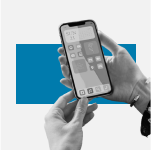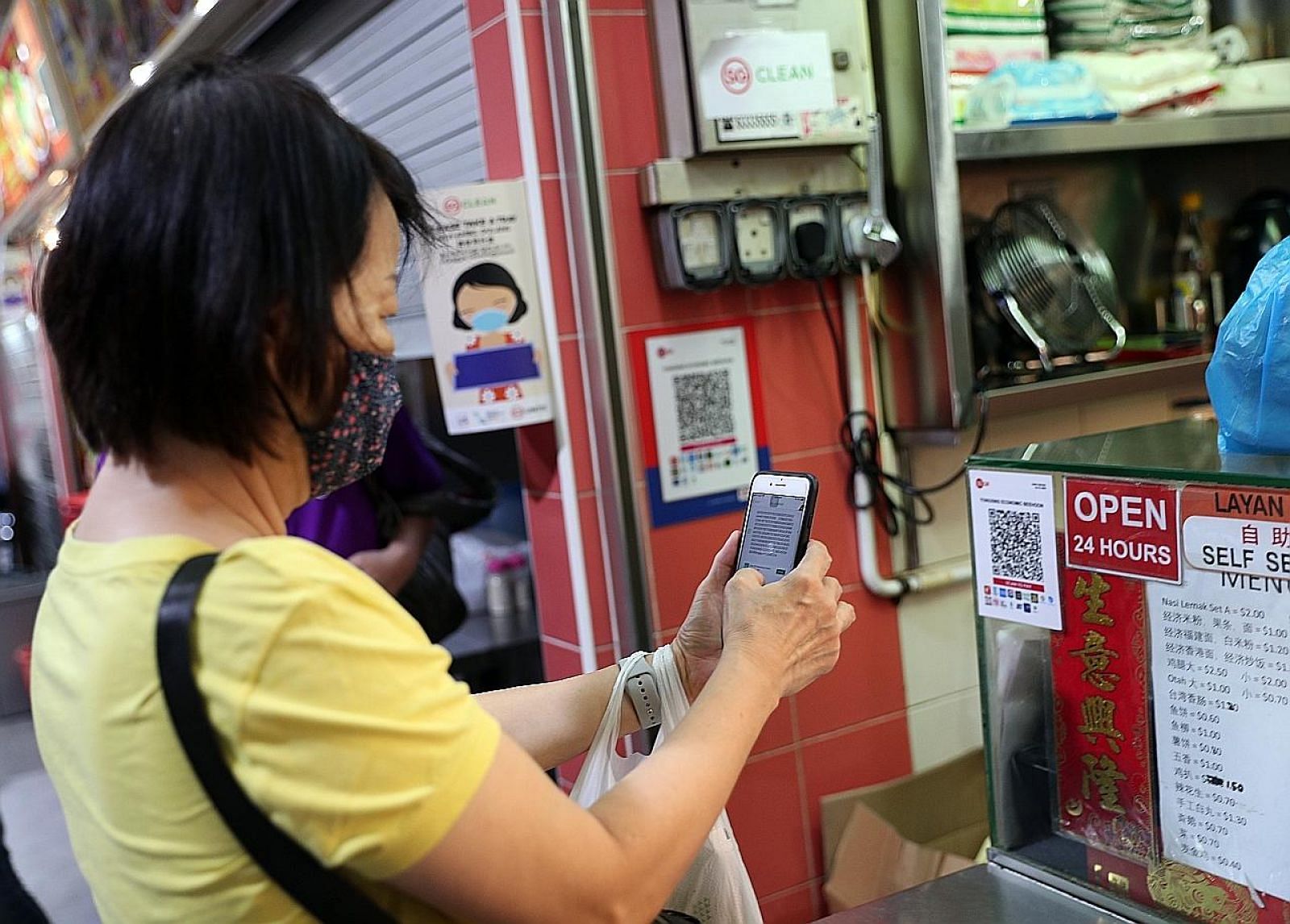PAYMENT services firm Nets has had a four-decade head start in Singapore.
But that advantage may be diminishing in line with a push by the Monetary Authority of Singapore (MAS) to streamline payments, give merchants more choices, and make various payment apps more compatible with each other.
SGQR+, a new solution unveiled this month that is offered under two different tracks – one by Nets and the other by fintech firm Liquid Group – paves the way for a new contender to match and potentially go beyond Nets’ local merchant network in size.
This could be a game-changer for digital banks, e-wallets, and financial institutions not currently part of the Nets network.
A brief history
Nets’ advantage in payments goes back to its founding. Established by a consortium of local banks in 1985, the firm was set up to drive the adoption of electronic payments in Singapore.
As part of an agreement with its three founding banks – DBS, OCBC, and UOB – Nets was granted the right to be their only acquirer, responsible for signing up merchants to the ecosystem. Meanwhile, the banks took care of signing up customers by issuing them debit cards.
BT in your inbox

Start and end each day with the latest news stories and analyses delivered straight to your inbox.
This set the stage for Nets to become Singapore’s largest merchant acquirer. Today, it has a domestic merchant network of over 130,000 acceptance points, of which 96,000 can process QR transactions.
That status gave it the heft to drive broad QR payments adoption at hawker center stalls and other retailers islandwide. It also gave Nets the negotiating power to tie up with its overseas counterparts in Indonesia, Malaysia, and Thailand to enable cross-border QR payments.
For many merchants, Nets QR is synonymous with SGQR, the country’s common QR code standard. SGQR is also often confused with PayNow, a domestic funds transfer scheme. (These all are not the same.)
The MAS recognised the need for a solution that could elevate SGQR – which simply consolidates different payment schemes onto one QR label – to one that can “substantially increase the number of merchant acceptance points” where consumers can use their preferred payment apps.
SGQR+ was floated as a potential solution.
What is SGQR+?
While SGQR+ does not immediately make all payment methods acceptable on a single QR code, it is a step in that direction.
The solution enables merchants to process transactions from a network of payment schemes by working with any one merchant acquirer. This means a customer using the ChangiPay e-wallet can pay at merchants that accept ShopeePay and FavePay, as all three platforms are under one track.
Under SGQR+, issuers can choose to work with Nets, Liquid Group, or both. While there is no change in how consumers will scan and pay, the types of payment options that can be accessed under Nets’ and Liquid’s tracks will differ.
For merchants, SGQR+ eliminates the need to sign and manage individual commercial agreements with every payment scheme they work with, saving them time and reducing operational complexity. They can also choose to work with a preferred acquirer from either Liquid’s or Nets’ network.
“We’re giving choices to the merchant,” Liquid Group chief executive Jeremy Tan said at a presentation in the 2024 Singapore Fintech Festival in November. “So, the competition will begin on the merchant front: different acquirers will start to reach out to the merchants, and (merchants) can compare. Competition, hopefully, will drive price optimisation (and) better quality service.”
However, Nets is confident that it can take on Liquid Group. “We have access to a relatively large merchant base, given the size of Singapore,” chief executive Lawrence Chan said at the Singapore Fintech Festival. “By the second quarter of next year, we will ramp up to almost all (acceptance points) that we have from a static QR standpoint, which is in excess of 24,000.”
Static QR labels – as opposed to “dynamic” QR codes that are generated by a point-of-sale machine – are cheaper to implement and tend to be used by smaller businesses.
While Nets will focus on growing the connectivity to local merchants between now and the second quarter of 2025, Liquid Group is thinking much bigger.
The fintech firm plans to roll out its solution locally and overseas from Q1 2025, bringing its offering to markets in Asia-Pacific and South America.
“In the near future, you’ll be able to go to another country, look for the national (payments) network, and use your app” to scan the relevant QR code, Tan explains.
The effort, dubbed roamQR, could bring together an estimated 50,000 merchants in Singapore and more than 50 million overseas retailers into Liquid Group’s network. It will enable users of local payments apps to pay overseas, and vice versa.
Conceptually, the idea is similar to Ant Group’s Alipay+ solution, which makes the e-wallets under its umbrella compatible with each other’s systems. For example, a user of GCash in the Philippines can pay at a merchant in Malaysia that accepts Touch ‘n Go.
Not created equal
Speaking to Tech in Asia, Chan acknowledges the “strategic advantage” of Nets’ network, which he likens to Visa’s.
Nets’ dominant position has meant that it is also able to ringfence access to some of its products – such as its cross-border payment rails with overseas national payment networks – to certain partners.
A cross-border QR payment link between Singapore and Indonesia’s QRIS established in November 2023 was touted by the MAS as being a “milestone for Singapore’s growing cross-border payments linkages.”
Similar agreements have been drawn up between Nets QR and Malaysia’s DuitNow and Thailand’s PromptPay.
To date, Nets has more than two million acceptance points in Malaysia, more than 32 million in Indonesia, and over eight million in Thailand, Chan shares.
However, these features are only accessible to customers who use the apps of the three Singaporean banks that own Nets – UOB, DBS, and OCBC.
That could change with Liquid Group’s roamQR.
At the moment, customers of MariBank – Sea Group’s digital bank – are only able to make international payments via their MariBank credit card. They can also use their credit card or savings account to fund balances in a third-party payments app that can be used overseas.
With roamQR, MariBank can “leverage Liquid Group’s international footprint to expand the bank’s scan-and-pay acceptance overseas,” giving its customers more payment choices, a MariBank spokesperson tells Tech in Asia.
MariBank, which will be part of the SGQR+ tracks offered by both Nets and Liquid Group, says it will see the addition of “more than 35,000” acceptance points across hawker centers, F&B outlets, and retailers via the former’s network, and “another 50,000 acceptance points in Singapore” through the latter.
Who wins?
Digital banks, e-wallets, and financial institutions not already part of Nets’ network will stand to benefit the most from the introduction of SGQR+.
At the moment, QR payments via the MariBank app are not supported by all merchants accepting SGQR codes.
One “pain point that our customers face is the limited locations where they can scan and pay using the MariBank app,” the company spokesperson tells Tech in Asia.
As one of 21 banks and six non-bank institutions participating integrated with domestic payment scheme PayNow, customers of MariBank in Singapore can scan and pay using the bank’s mobile app, but only at merchants that accept payments via PayNow.
“This creates confusion as most of our customers may not understand the nuances of QR code payments and would assume that all SGQR codes are available to them as MariBank customers,” the spokesperson adds.
Some digital wallets are also cheering the launch of SGQR+. Google Pay’s customers, for instance, will see expanded use of the digital wallet, as it can now be used at more merchants.
While contactless payments using credit cards is widely accepted in Singapore, “many local businesses still rely on QR code payments through the SGQR system,” particularly at smaller merchants and locations, notes Ramakrishnan TG, strategic partnerships lead for Google Payments in South-east Asia.
Travellers from the US, Europe, and Australia, who are used to transacting via credit card – through Google Pay – often end up having to use cash in these merchants, Ramakrishnan adds.
“Never say never”
It is worth noting that QR payments are just one part of Nets’ business. The firm continues to run the city-state’s national debit network used by six banks, and it also provides other point-of-sale solutions like stored-value cards.
It also manages and operates the clearing and payment infrastructure that enables Fast – the electronic funds transfer service that powers PayNow.
SGQR+ might mark the first step Nets is taking toward opening up its merchant network. But whether it will do the same for its cross-border payment rail is a whole other question.
Chan notes the “huge cost” the firm incurs in enabling a cross-border merchant network, including the cost of signing up merchants and “maintaining the system.”
That said, “we have done it locally, with SGQR+, where we sign up merchants now and we open it to (others) because we do recognise that in a small country like Singapore, it is value-add that we can provide for other non-Nets users,” he points out.
Keeping Nets a closed ecosystem is “a strategic advantage to our issuers and consumers,” Chan notes. But he adds that the firm would have to make an assessment over time whether or not to open the cross-border merchant network up to other issuers.
Asked if Nets will ever open its cross-border payment rail to more local participants, allowing its issuers in Singapore to access and pay at overseas merchants, Chan says: “I would say, never say never.” TECH IN ASIA














